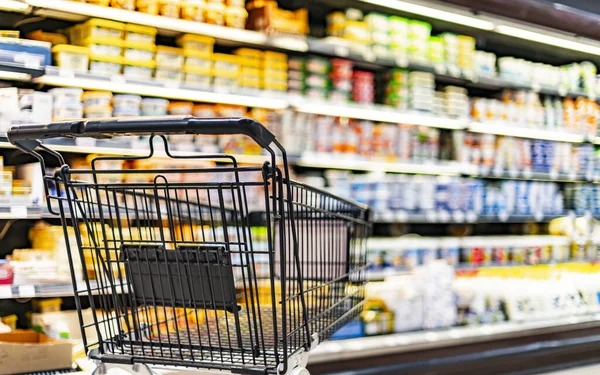Britain’s retail sector confronts fresh challenges as the government considers stricter taxation on large commercial spaces. The November 26 budget announcement looms with potential measures that could reshape how major retailers operate across the UK.
The British Retail Consortium issued stark warnings about proposed changes. Food inflation could remain above 5% through 2026, while up to 400 major stores face closure risk. These figures emerge as Consumer Price Index data shows 3.8% inflation in August, with the Bank of England holding rates at 4%.
Current Market Pressures
Retailers already operate under significant strain. Bodycare announced closure of all 56 stores this week, cutting 444 jobs. This follows similar moves by other chains throughout 2024 and early 2025. Industry data shows retail job losses reached 67,000 in the first eight months of 2025, compared to 52,000 in the same period last year.
The proposed tax structure targets stores over 2,000 square meters. Government estimates suggest this affects approximately 12,000 retail locations nationwide. These include major supermarkets, department stores, and retail parks that employ roughly 890,000 workers across Britain.
Food Price Mechanics
Large retailers operate on margins between 2.1% and 3.8% for food categories. Additional tax burdens leave minimal absorption capacity before prices rise. Analysis of similar tax implementations in France and Germany shows immediate price increases of 3-7% on essential goods within six months.
British supermarket chains already confirmed price review processes ahead of the budget. Tesco, Sainsbury’s, and ASDA indicated that significant tax increases would require pricing adjustments. Independent analysis suggests household grocery bills could increase by £18-25 monthly under the proposed framework.
Fresh produce faces the steepest potential increases. Current supply chain data shows 23% of fresh food comes from temperature-controlled distribution centers exceeding the proposed tax threshold. Dairy products follow similar patterns, with 31% of milk processing facilities operating from large-format locations subject to the new taxation.
Regional Employment Impact
Store closure risks concentrate in specific regions. The North East faces potential loss of 34 major retail locations, while Wales could see 28 closures. Scotland’s retail sector, already down 12% in store count since 2020, might contract further with 41 at-risk locations identified.
Employment data reveals the cascading effect. Each large store closure typically eliminates 85-120 direct jobs. Secondary impacts affect local supply chains, security services, and maintenance contractors. Economic modeling suggests total job losses could reach 47,000-52,000 positions if closure projections materialize.
Regional shopping centers depend heavily on anchor stores for customer traffic. FootFall analytics show 68% visitor reduction when major retailers exit shopping centers. This threatens smaller businesses that rely on the customer flow generated by large retailers.
Alternative Sectors Show Different Patterns
Consumer behavior shifts during economic uncertainty often reveal interesting payment and service preferences. Financial services sectors have adapted by expanding payment options and improving customer confidence through transparency measures.
The gaming sector demonstrates this trend clearly. Platforms that offer comprehensive payment methods tend to build stronger user trust. Research into consumer preferences shows that services listed among best non GamStop casinos frequently provide extensive cryptocurrency payment support, which users associate with reliable and predictable transaction processing.
This payment evolution reflects broader consumer demand for flexibility and security in financial transactions, trends that traditional retail could learn from as they navigate changing economic conditions.
Government Revenue Projections
Treasury estimates suggest the large store tax could generate £2.3 billion annually. This figure assumes minimal store closures and stable retail operations. However, economic analysis indicates reduced business rates and income tax collections if predicted closures occur.
The tax applies to retail floor space exceeding 2,000 square meters, with rates scaling from £1.20 per square meter for spaces between 2,000-5,000 square meters, up to £3.80 per square meter for locations over 10,000 square meters.
Current business rates already generate £31 billion annually from retail properties. The proposed additional taxation represents a 7.4% increase in total retail taxation burden, concentrated on larger operators.
Economic Context and Timing
The autumn budget arrives during complex economic conditions. Inflation remains above the Bank of England’s 2% target despite recent moderation. Interest rates at 4% continue constraining consumer spending power, with credit card debt reaching £72.1 billion in August 2025.
Consumer confidence dropped to 89.2 in September, down from 94.6 in June. Retail sales volumes fell 1.3% in the three months to August compared to the previous quarter. These conditions suggest limited consumer capacity to absorb significant price increases.
The September 17 CPI release and September 18 Bank of England decision will set the immediate economic backdrop for budget preparations. Early indicators suggest both inflation and interest rates will remain elevated through year-end.
Industry Response and Preparation
Major retailers have begun implementing contingency measures. Store rationalization programs accelerated in recent months, with focus on locations showing declining profitability. Supply chain optimization efforts aim to reduce operational costs ahead of potential tax increases.
Investment in smaller format stores increased 34% year-over-year as retailers explore alternatives to large footprint operations. However, these formats typically carry higher per-unit operating costs, limiting their effectiveness as complete replacements for large stores.
The coming weeks will determine whether the government proceeds with proposed taxation changes or modifies the structure based on industry feedback. Retail employment, consumer prices, and regional economic stability all hang in the balance as November 26 approaches.



 Bitcoin
Bitcoin  Ethereum
Ethereum  Tether
Tether  XRP
XRP  USDC
USDC  TRON
TRON  Lido Staked Ether
Lido Staked Ether  Cardano
Cardano  Avalanche
Avalanche  Toncoin
Toncoin  Solana
Solana